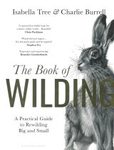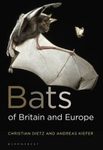By
Leon (NHBS Catalogue Editor)
23 Feb 2023
Written for Hardback

When done well, palaeoart represents one of the finest examples of science and art intersecting. As a genre, it continues to advance and reinvent itself, especially in its professionalism and scientific accuracy.
Mesozoic Art might represent Bloomsbury's entry into this market but the book has two experienced editors at the helm. Artist Steve White and palaeozoologist Darren Naish both have more than their fair share of producing and thinking about palaeoart. Featuring twenty artists,
Mesozoic Art is a gorgeously produced, large-format portfolio that shows palaeoart at its current pinnacle. For lovers of dinosaur illustrations, this book is a no-brainer, and I imagine that many will have already gone ahead and purchased it. But just in case you still need convincing...
Steve White previously edited
Dinosaur Art and
Dinosaur Art II, published by Titan Books. For reasons unknown to me, this collaboration has not continued. You would barely be able to tell from the cover, though, as the design and fonts are identical. I will leave a more in-depth comparison for the end of this review and first focus on the material at hand.
For this portfolio, White and Naish run a tight ship: twenty artists are given ten pages each. Contributors hail predominantly from North America, South America, and Europe, with one Australian thrown into the mix. Looking at the list, there are a few old hands but the focus is on a younger generation of palaeoartists rather than well-known veterans. I recognized a few names but admit not or only vaguely knowing most others. Since many have contributed art to books, magazines, scientific publications, and museum exhibits, it seems likely that I will have been exposed to some of their work in passing.
Given the power and versatility of today's hardware and software, it should come as no surprise that most artists by now work mostly or exclusively with digital media. Notable exceptions are Joschua Knüppe predominantly using acrylic and gouache, Emiliano Troco working exclusively with oil on canvas (his artwork is simply stunning and recalls Zdeněk Burian), and Greer Stothers using Risograph printing. Others occasionally use analogue media such as pencil, acrylic, and watercolour. But do not let this preponderance of digital illustrations fool you:
Mesozoic Art showcases a wonderful diversity of styles from photorealistic 3D renders (Joanna Kobierska) to impressionistic paintings (Brennan Stokkermans), and cartoonish depictions (Ravon Amos) to abstract art (John Conway). It looks as if the palaeoart scene has come into its own, liberally exploring what is possible with a digital pen or paintbrush. I have to commend White & Naish for the order in which the different styles are presented as the book flows nicely.
As artist Terryl Whitlach also highlights in her foreword, it is heartening to see that illustrators aim to depict extinct life not as monsters, but as living, breathing creatures adapted to their natural environment. Artists seem to have internalised the lessons and encouragement from, amongst others, Witton's
The Palaeoartist's Handbook regarding soft-tissue anatomy and depicted behaviours. Gone are the days of shrink-wrapped dinosaurs; instead we get to see well-rounded creatures with muscles, bulges, lips, and plenty of feathers or other integumentary coverings. Particularly noteworthy in this context is Jed Taylor's series of four Dromaeosaurid portraits. Gone, too, are the wide-mouthed carnivores chomping down on hapless herbivores. Only a few artists depict bloody predator-prey interactions, in keeping with the fact that animals are doing something else most of the time. Thus we get a sunbathing
Therizinosaurus (Midiaou Diallo), a
Scutellosaurus rolling in a muddy pool (Conway), and a very memorable closed-mouth vocalisation by
T. rex (Witton) which would look fantastic in a frame.
In their introduction, the editors admit that they have not been too strict in including artwork of animals from before or after the Mesozoic. As in the previous two portfolios, there are Eocene and Pleistocene mammals. My impression is that there is an increasing interest in early mammals and pseudosuchian archosaurs, showing the wonderful diversity of crocodile ancestors and relatives.
Lastly, a word on some of the compositions. I already mentioned the remarkable portraits, but there are also some nice dead-on frontal views, partial views that purposefully leave out heads and faces, while yet others highlight the long, lithe shapes of some creatures by curving their bodies in a near-circular shape. There are some moody pieces of dinosaurs caught in the rain (especially by, appropriately enough, Rainbolt) while Stokkermans's
Bajadasaurus is almost all sky, showing that dinosaurs do not have to be the centrepiece to make impressive palaeoart.
To round up this review: how, then, does
Mesozoic Art compare to the earlier portfolios from Titan Books? Next to the similar cover design, the book is also the same trim size (my OCD-self is very pleased: the three make a handsome collection on your shelf), and, as before, has illustrated endpapers and a nice cover illustration under the dustjacket. What it does not have are the large fold-out pages.
Mesozoic Art is slightly thicker at 208 vs. 188 pages. The biggest difference is in the text. The first two portfolios contained extensive interviews and could thus only feature ten artists each. For
Mesozoic Art, White & Naish have done away with this, providing only a compact biography for each artist and short captions with each illustration. While I miss the illustrators writing about their inspiration and methodology, the upshot is that the number of featured artists has doubled to twenty. Given the growth of the palaeoart scene and the many new talents out there, this seems appropriate. So, no, this is not quite
Dinosaur Art III, but
Mesozoic Art is very clearly intended as the spiritual successor that continues the mission of exhibiting the very best of current palaeoart.
Finally, flicking through the three portfolios, it is interesting to see the transitions over the years. I, for one, will not miss the photomontages of the past (they were never my thing) and welcome the greater diversity in artistic styles and in depicted subjects and behaviours. The animals may be dead, but the palaeoart community is alive and evolving. Given that these books have been published at five-year intervals, I am looking forward to (perhaps?)
Mesozoic Art II in 2027 to see what worlds past look like then.















































